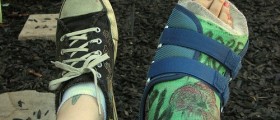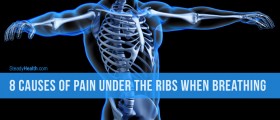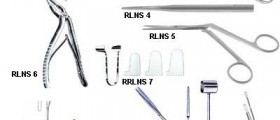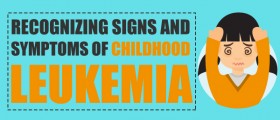
Sternum Fracture
Fracture of sternum (breastbone) affects 5-8 % of all people who have suffered blunt anterior chest trauma. This type of trauma is actually the most frequent cause of sternum fracture. The fracture most commonly results as a consequence of car accidents when body strikes steering wheel. However, it may also occur in different sports, both contact and non-contact. In a severe fracture, patients may have difficulties with breathing and suffer excruciating pain. This fracture can also point to even more severe injuries such as injuries or internal organs (the heart, lungs etc.).
Causes of Sternum Fracture
The leading cause of sternum fracture are vehicle collisions. If the driver is not wearing seat-belt, his/ her chest strikes directly into the wheel. Basically direct trauma to the anterior part of the chest causes this type of fracture most. Still, even sudden and overexessive flexion of the upper part of the body may lead to sternum fracture.
Accompanying Injuries
In case of sternum fracture patients may also suffer from additional injuries, predominantly injuries of internal organs such as the heart and lungs. These organs are located right behind the sternum so the chance of them being injured drastically increases if sternum has been broken. Additional structures that can be damaged are ribs, blood vessels in the chest and thoracic vertebrae.Symptoms and Signs of Sternum Fracture
One of the signs of sternum fracture is friction of the fractured parts. Patients complain about the pain, there is clear bruising of the sternum area as well as swelling of the nearby soft tissues. Fracture may move during breathing and it can be also easily palpated. If there are accompanying injuries they may reflect in abnormalities of heart function which is easily reported on electrocardiogram.
Treatment for Sternum Fracture
The fracture can be diagnosed after physical examination of the injured person. Still, chest X-ray is routinely performed to confirm or rule out the fracture. Minor fracture without dislocation of bone fragments is treated with analgesics and bed rest. Restriction of movement helps in process of healing. Surgery is required if fractured parts of the bone are dislocated. If dislocation is severe bone parts are additionally fixated.
This type of fracture is not treated with a cast since cast can inhibit breathing so patients are those who have to take care and stick to the entire doctor's advice, stay in bed for certain period of time and avoid sudden movements. After a few weeks patients can return to everyday activities trying to stay away from strenuous activities for additional period of time. And finally, some patients undergo physical therapy.

















Your thoughts on this
Loading...